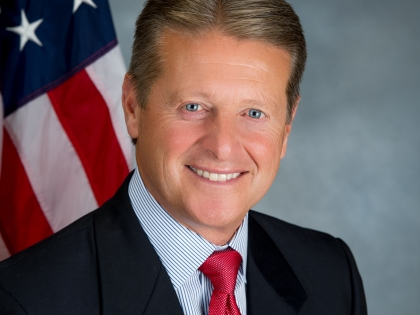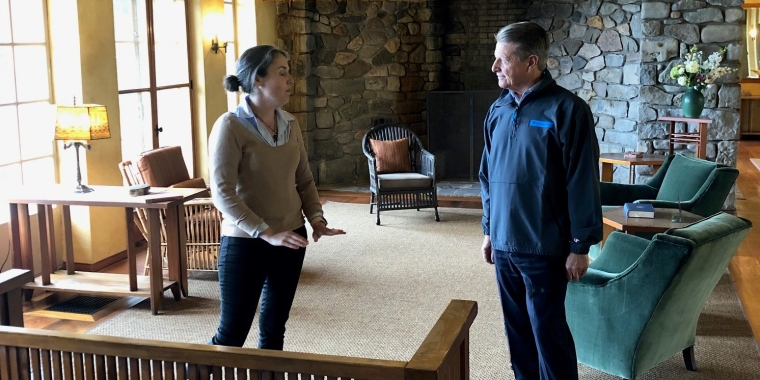
Senator Gallivan Applauds Both Product and Process of Budget
Patrick M. Gallivan
March 30, 2011

ON-TIME STATE BUDGET BALANCES THE DEFICIT, CUTS SPENDING AND HOLDS THE LINE ON TAXES
Senator Patrick M. Gallivan (R,C,I – 59th District) announced today that The New York State Senate has approved the state budget for fiscal year 2011-12. The adopted plan, closely resembling Governor Cuomo’s initial spending proposal, closes a $10 billion deficit, holds the line on taxes, and cuts government spending by $3.5 billion compared with last year. The agreement reached early Thursday morning marks the first time in over 5 years that the Governor and the Legislature were able to finalize a budget by April 1.
“Both the product and the process of this budget are a testament to the leadership provided by Governor Cuomo and the bipartisan recognition in the legislature that business-as-usual in state government has become unsustainable and unacceptable. It took years of shortsighted governance to deliver New York into its current condition, but tonight marks the first step down a new path. The budget eliminates our current $10 billion deficit, markedly improves the state’s outlook for next fiscal year, consolidates and eliminates inefficient bureaucracy, and encourages private sector job growth, particularly in Western New York,” said Gallivan.
The budget achieves its savings primarily through a 10 percent across-the-board spending reduction for all state agencies, cuts to Medicaid totaling $2.8 billion, reductions in funding for education, , and consolidating redundant government agencies – the Department of Correctional Services and the Department of Parole will combine to form the Department of Corrections and Community Services, and the Department of Financial Regulation will be comprised of the formerly separate banking and insurance departments.
Job creation and economic growth, top priorities for Western New York, were specifically addressed through budget reforms as well. “Many initiatives contained in this agreement are very responsive to the unique challenges and opportunities facing Western New York. The Recharge NY program, an improved Excelsior Jobs Program, and a $50 million economic development fund for Downtown Buffalo’s inner harbor, medical corridor and other high impact areas are all essential to creating a modern, globally competitive economy for Western New York,” said Gallivan.
Ensuring all available education dollars were equitably distributed based on need and geography was another top priority of Gallivan’s. “I directly expressed my concern that school districts in rural areas of Upstate were being shortchanged under the original budget formulas, and I am very pleased nearly $280 million in additional assistance was ultimately restored in the final agreement, providing significant relief for many Western New York districts.”
UB 2020, the University at Buffalo’s strategic growth and development plan, took another step forward. The budget included two critical components providing SUNY and CUNY campuses increased flexibility in both procurement procedures and their ability to engage in public-private partnerships. “UB 2020’s prospects have never been better. The plan has more support at this moment than at any other in its history, including Governor Cuomo’s, who has personally assured Senate Republicans that he views UB 2020 as an essential part to revitalizing Western New York and has committed to convening a stakeholder summit to secure its enactment,” said Gallivan.
Other items of importance for Western New York families include;
· Funidng restorations for Roswell Park Cancer institute.
· Distributing previously allocated funds to Erie Community College to supplement certain capital improvements
· Complete restoration of previously eliminated funding for 4201 schools, like Saint Mary’s School for the Deaf in North Buffalo
· Reinstituting the sales tax exemption for clothing purchased under $55, increasing to $110 after one year, giving a much needed boost to the local retail market.
“One year’s budget will not erase decades of poor fiscal management, but this agreement and the manner in which it was reached signifies there is cause for optimism. The Legislature and the Governor worked together with a sense of common purpose to make the difficult, but responsible decisions necessary to ensure New York’s future is brighter than its present. This momentum must serve as a catalyst to provide more solutions for working families, small businesses, and local taxpayers. Solutions like mandate reform for local governments and property tax relief for over-burdened homeowners,” concluded Gallivan.



